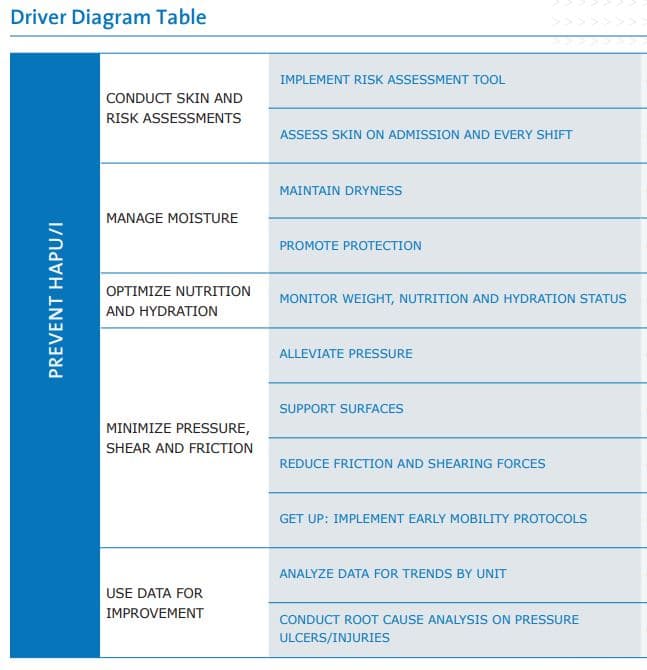
Pressure Ulcer Rates: How are Healthcare Facilities Performing?
Pressure ulcers, also called decubitus ulcers or bedsores, are one of the most alarming complications of healthcare across the world. Pressure ulcer rates are increasing in healthcare facilities, and the impact is incredible. At MedMalFirm.com,…
Pressure ulcers, also called decubitus ulcers or bedsores, are one of the most alarming complications of healthcare across the world. Pressure ulcer rates are increasing in healthcare facilities, and the impact is incredible. At MedMalFirm.com, our Houston pressure ulcer attorney receives calls about pressure ulcers every day.
These calls are from families that have been impacted by the emotional and financial trauma of injuries that should never have occurred. Often, families have questions about the care a loved one has received, including wanting to learn more about clinical guidelines for prevention and treatment of pressure ulcers.
To help, we have compiled some data about pressure ulcer prevalence, pressure ulcer rates in Texas healthcare facilities, and have provided information about clinical guidelines and recommendations. Read on to learn more, and contact us with questions or concerns about a specific pressure ulcer case.
The Problem of Pressure Ulcers
Across the United States, it is estimated that over 2.5 million people develop a pressure ulcer each year. The vast majority of these injuries will develop in a healthcare setting. Pressure ulcers are painful, and increase the risk of complications including infection, sepsis, gangrene, or necessary amputation. Not only does a pressure ulcer increase the risk of health complications, but it is also a significant cause of death.
Each year, around 60,000 patients die as a result of pressure ulcers. What makes this total even more heartbreaking is the fact that these injuries are preventable. According to the Institute for Healthcare Improvement (IHI), almost every case of pressure ulcer development is preventable. Sadly, the IHI notes that pressure ulcer rates in healthcare facilities is increasing.
With so many advances in science and medicine, and more strict guidelines for patient assessment and care, why are pressure ulcers continuing to plague our healthcare environment? Why are tens of thousands of patients dying each year to preventable injuries?
These are questions that are causing a great deal of turmoil among patient advocates, regulatory agencies, the legal community, and the public at large. Numerous organizations are conducting research and seeking to identify ways to prevent pressure ulcers. Increasingly, regulatory agencies are looking toward punitive measures to encourage healthcare facilities to comply with clinical guidelines.
In 2008, the Centers for Medicare & Medicaid Services (CMS) announced that they would not pay for hospital-acquired pressure ulcers. The agency acknowledged that pressure ulcer treatment is costly (a pressure ulcer adds an estimated $43,000 to the cost of a hospital stay), but also that the injuries can be prevented by adhering to evidence-based nursing practices.
Pressure Ulcer Rates in Texas Healthcare Facilities
Several healthcare facilities in Texas had an alarming average score for patients with pressure ulcers. These facilities included hospitals, rehabilitation centers, and long-term care facilities. Below, we have identified the 15 facilities with the highest percentage of patients with pressure ulcers as detailed by CMS.
- Promise Skilled Nursing Facility Of Wichita Falls – 25.6%
- The Vosswood Nursing Center in Houston – 22.7%
- The Hampton At Post Oak in Houston – 21.4%
- Crestview Retirement Community in Bryan – 20.4%
- Royal Oaks Residence And Rehabilitation Center in Houston – 19.2%
- Hogan Park Nursing & Rehabilitation in Midland – 17.6%
- The Rio At Mission Trails in San Antonio – 17.5%
- Ranger Care Center in Ranger – 16.6%
- Homestead Nursing And Rehabilitation Of Collinsville – 16.4%
- Oak Village Healthcare Ltc Partners, Inc. in Lake Jackson – 16.3%
- Bonham Nursing And Rehabilitation Lp in Bonham – 16.1%
- Walnut Place in Dallas – 16.1%
- Highland Pines Nursing Home in Longview – 16%
- The Meridian in Galveston – 15.6%
- Stanton Nursing And Rehabilitation Lp in Stanton – 15.5%
All of these facilities scored an average of 15 percent or higher. These numbers are alarming. As noted above, pressure ulcers are considered one of the most preventable injuries in healthcare facilities. Such high averages for patients developing pressure ulcers indicates serious negligence and a failure of healthcare staff to comply with clinical guidelines.
The Hospital-Acquired Condition Reduction Program (HACRP)
In 2014, statutory requirements for the Hospital-Acquired Condition Reduction Program (HACRP) were established in Section 1886(p)(6)(B) of the Social Security Act. The HACRP was designed to link healthcare quality to Medicare payments received by healthcare facilities.
Facilities that perform well will continue to receive uninterrupted Medicare payments. Facilities that perform poorly, or score greater than the 75th percentile, will be subject to a reduction in Medicare payments of one percent. The goal is to incentivize healthcare facilities to comply with the standards of care and clinical guidelines. Further, the payment reduction is a punitive measure for facilities consistently performing poorly.
PSI 03 – Pressure Ulcer Rate
One of the hospital-acquired conditions (HAC) that is measured in the HACRP is pressure ulcer rate. CMS reviews data on healthcare facilities participating in the Medicare payment program. They observe the patient body and determine what percentage of patients in each hospital have a pressure ulcer.
PSI 03 is the measure used to determine the percentage of high risk long-stay residents with pressure ulcers. CMS assigns a four-quarter average for each healthcare facility. A higher percentage indicates more people with pressure ulcers in that facility.
Clinical Guidelines for Pressure Ulcer Prevention
Over the past several years, increasing rates of pressure ulcers in healthcare facilities have prompted agencies across the world to collaborate toward prevention strategies. Some of the recommendations and clarifications of clinical guidelines include:
2014 Worldwide Collaboration
In 2014, the National Pressure Ulcer Advisory Panel (NPUAP) collaborated with the European Pressure Ulcer Advisory Panel (EPUAP) and the Pan Pacific Pressure Injury Alliance (PPPIA) to review literature on pressure ulcer prevention and treatment. This collaboration focused on scientific methodology and evidence-based practice. Together, a new guideline was recommended for clinical practice, which included 575 recommendations for pressure ulcer assessment, prevention, and treatment.
2014 NPUAP Quality of Care Guidelines
Also in 2014, the NPUAP published a document titled “The NPUAP selected “Quality of Care Regulations” made easy”. This document identifies pressure ulcers under the “F-tag” F-314 Quality of Care. Under this guideline, residents/patients must be provided with necessary care and services to “attain or maintain the highest practicable physical, mental, and psychological well-being, in accordance with the comprehensive assessment and plan of care”.
F-314 states that an individual “who enters the facility without pressure sores does not develop pressure sores unless the individual’s clinical condition demonstrates that they were unavoidable”. This guidelines requires healthcare facilities and staff to:
- Promote pressure ulcer prevention
- Promote healing of wounds that develop
- Prevent infection
- Prevent development of additional ulcers
If a patient who did not have a pressure ulcer develops one, it is considered avoidable by guidelines, which means that the facility or staff failed to:
- Evaluate the resident for clinical conditions and pressure ulcer risk
- Define and implement interventions based on the patient’s needs, goals, or the standards of practice
- Monitor and evaluate intervention impact and efficacy
- Revise interventions as needed
2015 American College of Physicians Recommendations
In 2015, the American College of Physicians (ACP) developed a recommended guideline for risk assessment and prevention strategies for healthcare facilities. These recommendations included:
- Clinicians should perform risk assessment to identify at-risk patients. Factors for increased risk include:
- Older age
- African American or Hispanic
- Low body weight
- Physical impairments
- Cognitive impairments
- Comorbid conditions, such as difficulty healing, incontinence, diabetes, or malnutrition
- Clinicians should use preventative interventions, such as:
- Advanced static mattresses or overlays
- Nutritional supplementation
- Routine repositioning/turning
- Proper skin care (dressings, hygiene, incontinence care)
- Clinicians should not use alternating-air mattresses or overlays for patients who are at-risk.
- Treatment modalities under these guidelines include:
- Use of amino acid or protein supplementation to reduce the size of the wound
- Use of hydrocolloid dressings to reduce wound size
- Use of electrical stimulation to accelerate wound healing

Get Help with Pressure Ulcer Questions or Concerns
As you can see, pressure ulcers in healthcare settings is a tremendous concern in Texas, across the U.S., and in healthcare environments around the world. While it can be difficult, or even overwhelming, trying to make sense of how and why an injury occurred, it is easy to get help.
If you have questions or concerns about pressure ulcers, the care you or a loved one received, or your legal rights as a hospital patient or nursing home resident, contact MedMalFirm.com to get help by completing our online form.
Our medical malpractice and nursing home abuse attorneys can answer your questions, determine if you have a claim, and fight for the compensation and justice you deserve.
